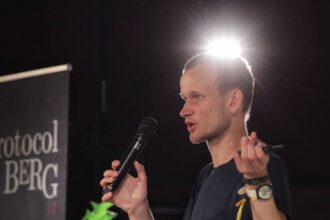Solana Introduces Alpenglow: A New Era of Speed and Consensus
For all its speed and throughput, Solana has long wrestled with the fundamental tension that the technology powering its high performance also constrained its potential.
The Limitation of Proof-of-History (PoH)
Proof-of-history (PoH), the cryptographic clock that distinguished Solana from other blockchains, revolutionized how events are ordered on the network. It introduced a verifiable delay function, enabling a unique way to sequence transactions before consensus is achieved. However, PoH itself never addressed the problem of achieving final, shared agreement.
To resolve consensus after PoH provided the ordering, Solana layered the Byzantine fault-tolerant mechanism Tower BFT onto its block stream. This two-pronged approach worked, enabling Solana’s high throughput. But it was architecturally complex, difficult to further optimize, and became increasingly inadequate as network ambitions and builder demands grew.
The Unveiling of Alpenglow
Last week, Solana Labs announced a proposal to sunset both PoH and Tower BFT, replacing them with Alpenglow. Developed by Anza, a core engineering team spun out from Solana Labs, Alpenglow represents a fundamental, structural reimagination of how time, consensus, and data flow across the network. It effectively signals the sunset of the technical debt accumulated by pairing PoH with Tower BFT.
Better Performance and Simpler Design
At its heart, Alpenglow introduces a streamlined consensus framework, collapsing the distinct processes of sequencing, voting, and block finality into a single integrated design. The headline-grabbing result is global finality achieved in under 150 milliseconds—though actual performance depends on network conditions and validator participation.
Previously, while the PoH mechanism rapidly ordered transactions (tens of thousands per second), the finality mechanism (Tower BFT) was significantly slower than transaction throughput. Tower BFT needed 12.8 seconds to finalize a block, creating lag. Solana mitigated this by introducing optimistic confirmations—probabilistic guarantees for finality—but the core finality bottleneck remained. For real-time applications aiming to achieve event finality as they occur, this lag needed to disappear.
The Core Components: Votor and Rotor
Alpenglow achieves its breakthrough through two core components:
- Votor: The new finality engine. Resolving consensus in one or two rapid voting rounds is the hallmark of Votor. If 80% of the stake goes online, consensus is reached in a single round. If only 60% is responsive, it defaults to a second round. Both initiation paths run concurrently, and whichever concludes first declares finality. This significantly reduces the waiting time.
- Rotod: A reworked data propagation mechanism built upon the refinement of Solana’s Turbine protocol. Rotor replaces the original tree-structured data distribution. Leveraging erasure coding and deterministic relay assignment, Rotor employs a single, flat relay structure that broadcasts data with minimal routing steps and maximum bandwidth utilization.
Alpenglow’s speed is staggering—so fast that the physical distance (“latency”) between geographically dispersed nodes, governed by the speed of light, becomes the primary speed limit for confirming transactions, underlining a sensational leap in performance.
Quantifying the Performance Leap
Simulations mirrored these results. Using Zurich as a reference node, 65% of Solana’s stake achieved notarization (a key step towards finality) in under 50 milliseconds. Global finality reached a median attainment time of 150 milliseconds, with some instances as quick as 100ms, outperforming many familiar Web2 Application Programming Interfaces.
This isn’t a system based on probabilistic confirmations. It delivers deterministic, verifiable cryptographic consensus, marked by unprecedented speed. Critically, the upgrade is designed for resilience. Even under duress, Alpenglow remains performant, maintaining consensus despite conditions with up to 20% adversarial stake and 20% non-responsive stake.
Breathing New Life into Solana
The core implication for developers and application architects is transformative. Cryptographically confirmed transaction finality is no longer a bottleneck determined by tens of milliseconds. Applications designed for real-time interactions—in the realm of gaming, payment clearing, identity verification, or continuous automation—essentially gain permission to achieve finality on output *with the speed of their input*, eliminating a fundamental constraint.
This upgrade marks Solana’s most significant leap yet, transitioning it from “eventually final” to the rare, high-category “immediately final,” propelling it towards a paradigm where transactions complete instantly, fostering new innovation layers dependent on the speed of present thought.












